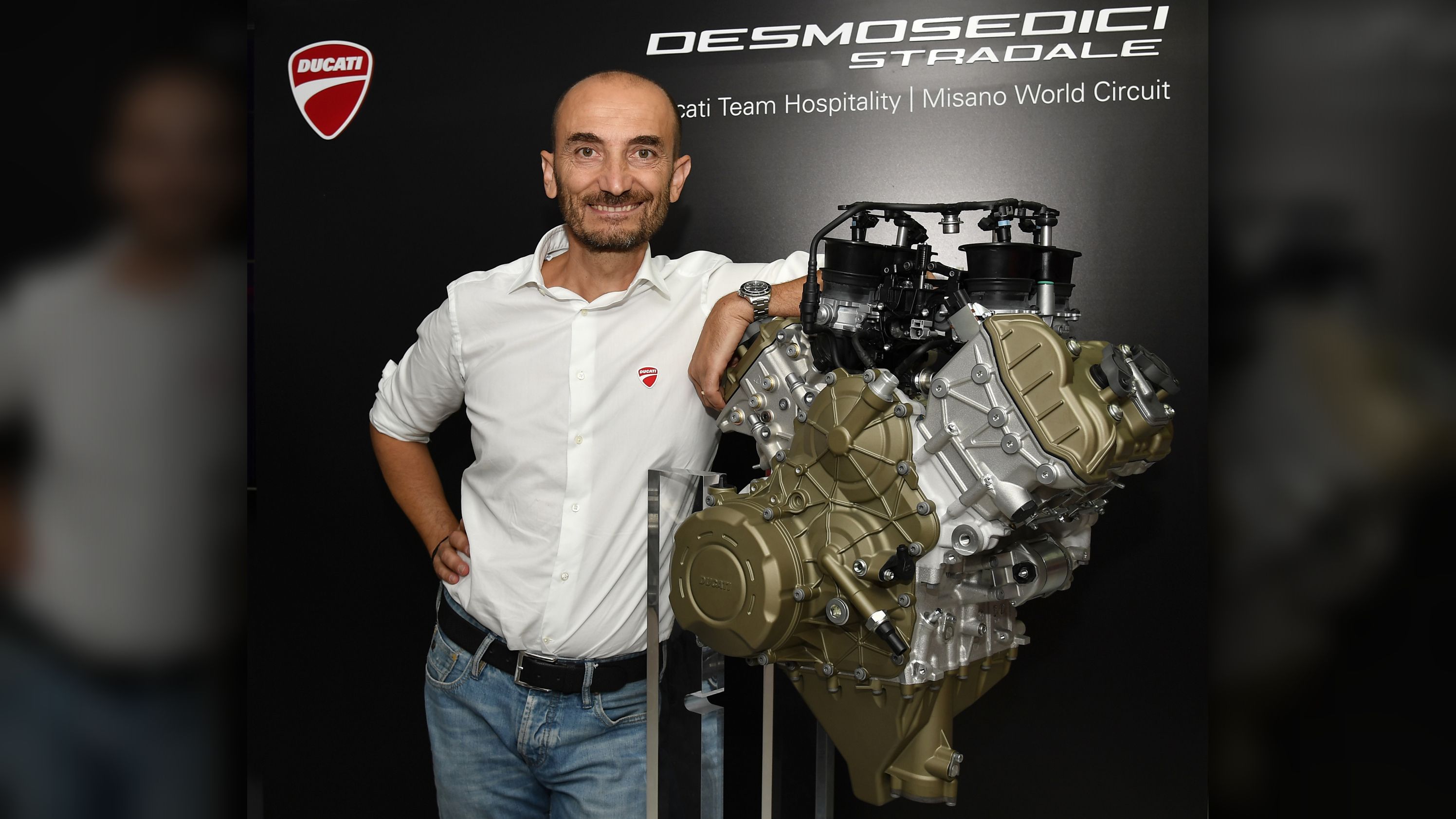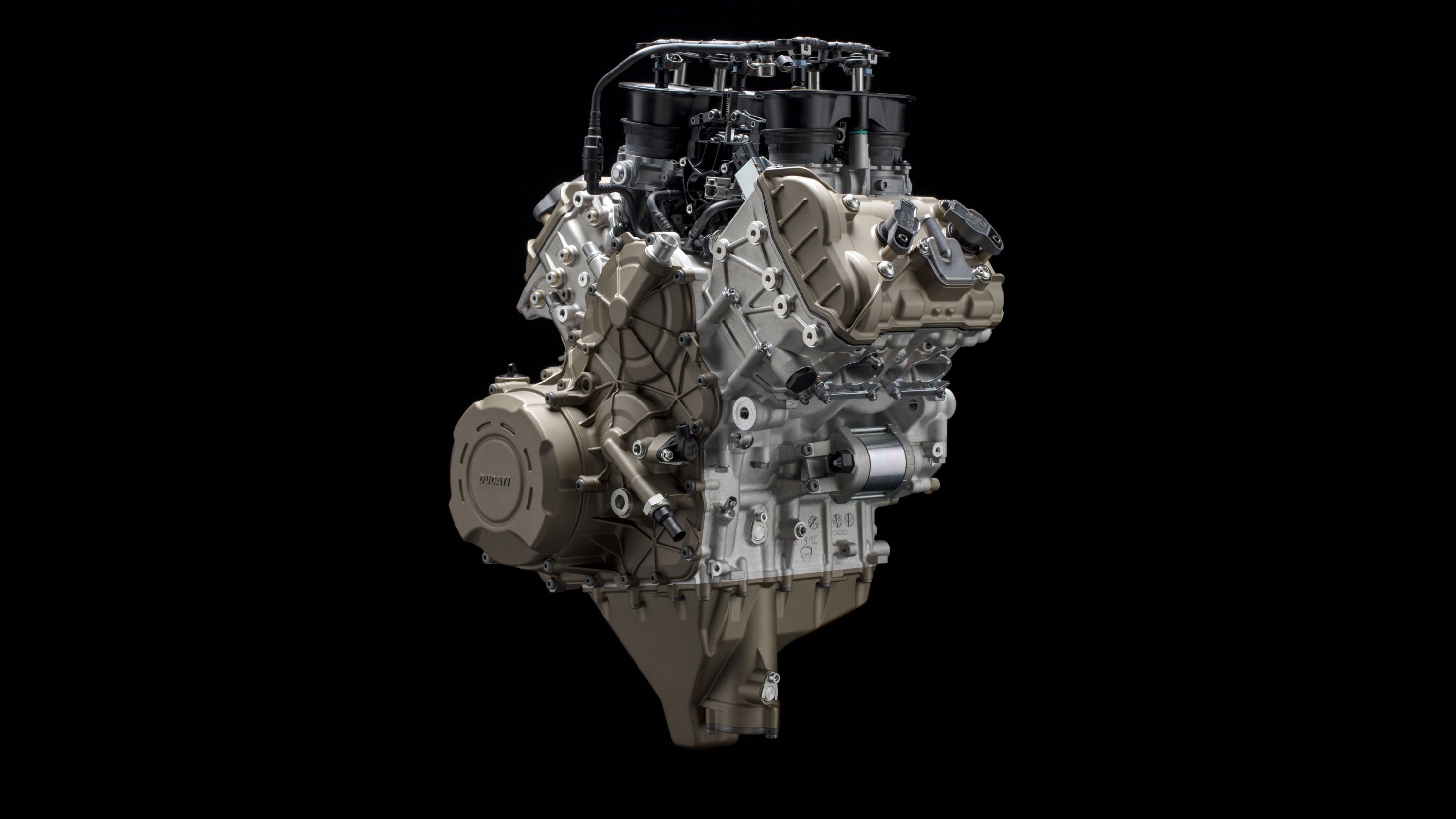Like all race-engine developers, Ducati is always looking for ways to improve performance on the track while bringing the lessons learned there to the public sector, and the new Desmosedici Stradale is an example of just such a crossover of technologies. The factory borrowed the heads from its Desmosedici GP racebike engine, and built the “civilian” version around them. We'll get to more of the how in a bit, but if you're like me, you want to know how much, so let's cut to the chase. As a short-stroke V4, you know it's going to favor ponies over twist, so the over 88 pound-feet of torque comes as no great surprise. However, the over 210-horsepower is definitely respectable. Why do I say “over?” Well you see, in spite of our correspondence, I still haven't heard back from Ed McMahon, so I haven't yet built that addition to my garage to house the dynamometer that I also haven't purchased and the factory claims that the output “exceeds” the stated values. It's important to remember that this is meant to power street-legal machines (even if the manner in which they are ridden may not always over legal), and so these numbers are probably beyond most riders' skillset. It is without a single iota of shame that I admit this engine is be beyond my skills, without a doubt, but some of you are going to get all giggly just thinking about winding it up. (Don't lie, you know you are...)
far
Continue reading for more on the new Ducati engine.0}
The 81 mm bore and short, 53.5 mm stroke (times four) adds up to 1,103 cc with a smokin' hot 14-to-1 compression ratio. A “Twin Pulse” firing order and 70-degree offset at the rod journals define the shape of the crank, and since the crankshaft rotation is backwards from the norm, the inertial forces it generates helps hold the front end down rather than encouraging it to loft with a slight loss of energy and control. Ya hear that kids? Wheelies are bad, m'kay? M'kay.
Rather than using power-sapping counterbalancers, the factory took advantage of the self-canceling vibrations inherent with the design to reduce rotating mass and leave room for the waterpump. The cases are cast aluminum as are the bores, though the latter sports a Nikasil lining for wear protection. Is all that worth it? I'd say so since the whole plant clocks in at a mere 143 pounds, so in other words I could bench-press the damned thing when I was only 14 years old. Variable-length oval throttle bodies manage the induction and improve bottom-end grunt while preserving top-end performance with a 52 mm diameter (ovalameter?).
What Ducati mill would be complete without the Desmodromic valvetrain? Not this one, according to the factory. In fact, it gets an upgraded version of the legendary system with variable valve timing. Instead of valve springs, the Desmodromic system uses cams that pull the poppets closed and have historically given Ducati engines some fairly frenetic redlines.
Is there more? Sure, I could write a small paperback novel about this plant. If you really want to know this engine (not in the biblical sense), then you have but to wait for the next Panigale to be released since the Stradale is purported to be pushing it. I don't know if it's something in the water over there or just because they are such a passionate people, but Ducati reminds us, once again, why Italian engineering is respected around the world.
.


